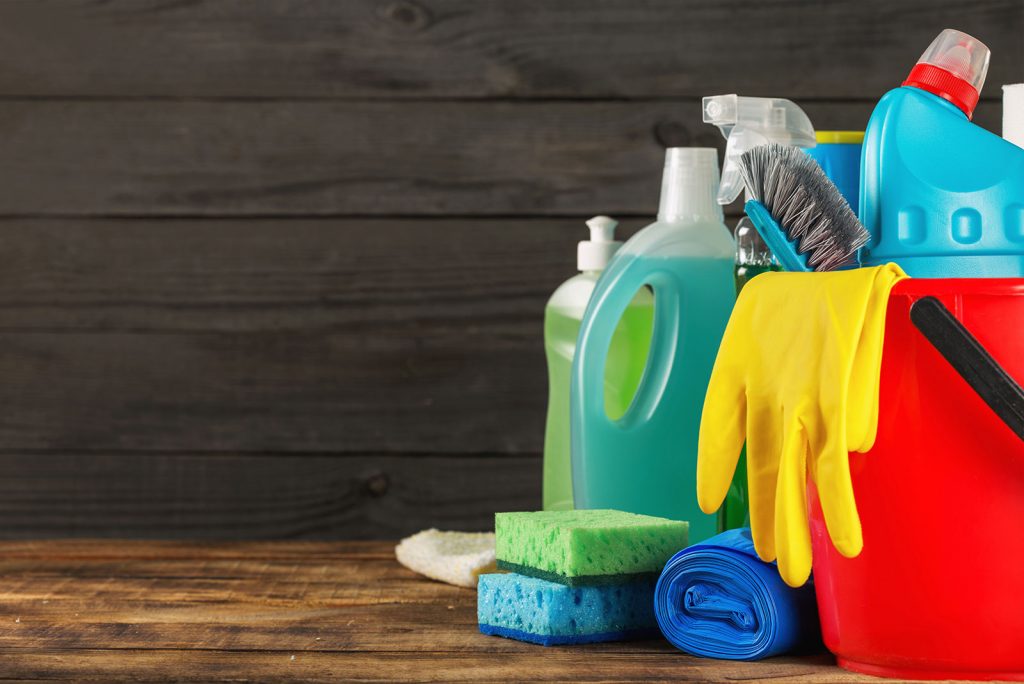
It’s in the air—the crisp scent of spring is finally on its way. After months of indoor winter living, it will soon be possible to reconnect with nature again! This spring, let the season inspire you to honor our environment, starting with how you tidy up your home.
Why do I need to think about how I clean my home?

Springtime cleaning rituals began because wood-burning stoves, fireplaces, and lamps were lit with whale oil or kerosene, which additionally had to be heated with coal or wood. You can imagine the grime and grease created over the course of a winter season. Now, with modern electricity, our homes don’t get quite as dirty during the winter months. But even the relatively light cleaning of today’s homes and apartments can have a potential environmental impact on the ecosystem and on our health. Even if your living space is cleaned of dirt, dust, and allergens, it may not actually be clean, environmentally speaking.
A good place to start a more conscious spring cleaning routine is with your supplies. Cleaning supplies sold in your supermarket can not only cost your wallet, but many of them contain chemicals that affect our health and the environment. According to the Environmental Protection Agency, cleaning products release chemicals into the environment through evaporation, or being drained into sewers and water sources. Some chemicals found in common cleaning products can harm the eyes, skin, lungs, and, according to the Environmental Working Group (EWG), may be linked to other health conditions.
And, it’s not just what’s inside the cleaning supply bottle. There’s packaging, manufacturing, distribution, and waste disposal or recycling, all of which require energy use and therefore have an environmental impact.
DIY Cleaning Options
To keep things environmentally clean when you’re cleaning, one solution is remarkably simple: if it’s good enough for your pantry, it’s good enough for your utility closet. Many of the common ingredients in your pantry can be used for more than your next baking recipe! They can do double duty as nontoxic cleaning products. Here are some examples.
- Vinegar: Vinegar dissolves dirt, soap scum, and hard water build-up, and can leave your winter humidifiers sparkling and bacteria free (before you pack them away for next season).
- Baking Soda: Baking soda is an effective scrubbing agent and deodorizer for everything in need of a refresh: the fridge, old workout clothes, sneakers, musty mattresses, and pet beds.
- Lemon: Thanks to its acidity lemon also is a disinfectant, plus it will leave your home with a natural scent.
- Salt: Salt, alone, or in combination with baking soda, makes a scrubbing agent or laundry cleaner (for wine spills, it can work great together with club soda).
- And more! Outside the pantry, items from elsewhere in your home (rubbing alcohol, borax, and essential oils) can all help fill in for commercial cleansers.
To create your own multipurpose cleaner, try a vinegar solution (1 part water to 1 part vinegar), or a lemon glass cleaner (4 tablespoons lemon juice with ½ gallon of water) in a spray bottle. Recipes abound online and your home, not to mention our environment, will benefit from a little experimentation to find just the strength and types of cleaners you like best. Here are additional recipe ideas.
Buying Green Cleaning Products
If you are not keen on DIY when it comes to your cleaning supplies, or if you need higher power commercial cleaners, there are plenty of options on the market for green cleaning products. The EWG has compiled a useful consumer Guide to Healthy Cleaning, which rates products based on a detailed scientific review of ingredients. Plus, here are some more ideas of green cleaning products. And be sure to utilize reusable cleaning cloths, sponges, and other cleaning tools that can reduce use of disposables.
Other Spring Tips
While you’re at it, don’t forget other seasonal to-dos that can make a big difference on your home’s energy use. These include cleaning your air conditioners or HVACs of dust and debris, and changing their filters, to increase energy efficiency. While you’re wiping down ceiling fans, don’t forget to switch the direction of blade direction from winter to summer mode (counter-clockwise).
While you’re sprucing up your home for spring, stay true to your commitment to a more sustainable planet, and give thought to your daily impact, from the cleaning products used around the house, to the kind of energy you choose to power it. We hope the spring lifts your spirits and brings you renewed energy for a fresh, clean start!









